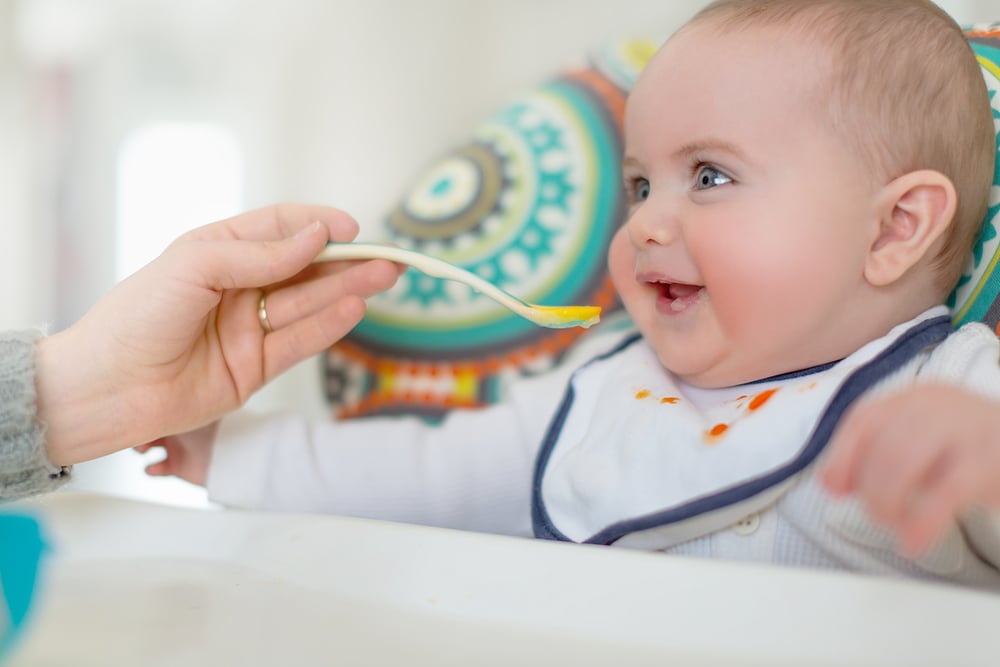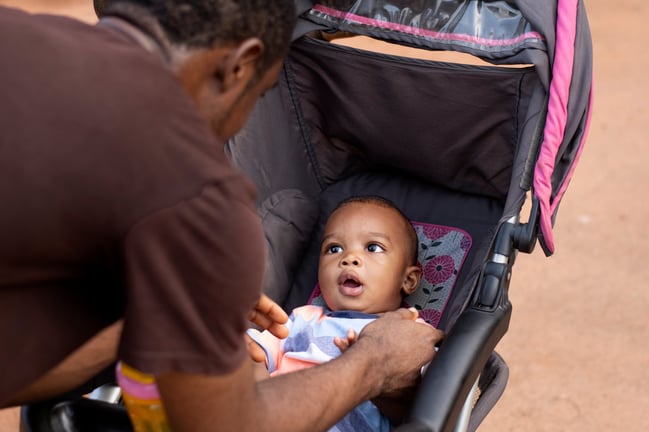
Health & Physical Development
Infants (Birth to 12 months)
Components and Developmental Indicators
Infants (Birth to 12 months)
Components and Developmental Indicators
Developmental Indicators
HPD Goal-1: Children develop healthy eating habits.
![]()
Eat different kinds of food such as liquids, pureed or soft foods, and finely chopped food.
![]()
Show interest in feeding routines.
![]()
Help with feeding themselves (eat finger foods, hold bottle).
![]()
Show hunger or fullness using actions, sounds, or words (cry or search for food, turn away when full).
![]()
Show food preferences.
![]()
Respond to different textures of food in their mouth (wait for the next bite, spit out food, turn head away).
HPD Goal-2: Children engage in active physical play indoors and outdoors.
![]()
Engage in physically active moments (spending time on their tummy, repeating actions, kicking, waving arms, rolling over).
![]()
Move body to explore indoor and outdoor environment.
![]()
Develop strength and stamina by continuing movements over short periods of time.
HPD Goal-3: Children develop healthy sleeping habits.
![]()
Sleep for longer periods at a time (more at night, and less during the day).
![]()
Settle down and fall asleep after a routine that includes a familiar series of events, such as calming songs and stories.
![]()
Sleep well and show alertness during waking periods.
Developmental Indicators
HPD Goal-4: Children engage in play and movement to develop the large muscle control and abilities needed to explore and move in their environment.
![]()
Develop control of head and back, progressing to arm and leg movements.
![]()
Maintain upright posture when sitting and standing.
![]() Explore body positions and movements, rolling, pushing up, pulling to stand, and kicking or reaching for objects to achieve a goal.
Explore body positions and movements, rolling, pushing up, pulling to stand, and kicking or reaching for objects to achieve a goal.
![]() Move from place to place as their abilities allow (squirm, roll, scoot, crawl, cruise, or walk).
Move from place to place as their abilities allow (squirm, roll, scoot, crawl, cruise, or walk).
HPD Goal-5: Children engage in play and experiences to develop muscle control and hand-eye coordination to manipulate objects and work with tools.
![]()
Use both hands to swipe at, reach for, grasp, hold, shake, and release objects.
![]()
Explore shape, weight, size, and texture by turning objects, dropping, or transferring objects from one hand to another.
![]()
Use index finger and thumb (pincer grasp) to pick up an object.
Developmental Indicators
HPD Goal-6: Children develop personal hygiene and selfcare skills.
![]()
Tolerate care routines (mouth care, handwashing, diapering, dressing, and bathing).
![]()
Show interest and assist in routines (open mouth for milk or spoon, raise arms for dressing).
HPD Goal-7: Children use safe behaviors and personal safety practices with support from adults.
![]()
Show trust in familiar adults (calm down with adult help, make eye contact with adults).
![]()
Notice and imitate adults' reactions to new people and situations.



